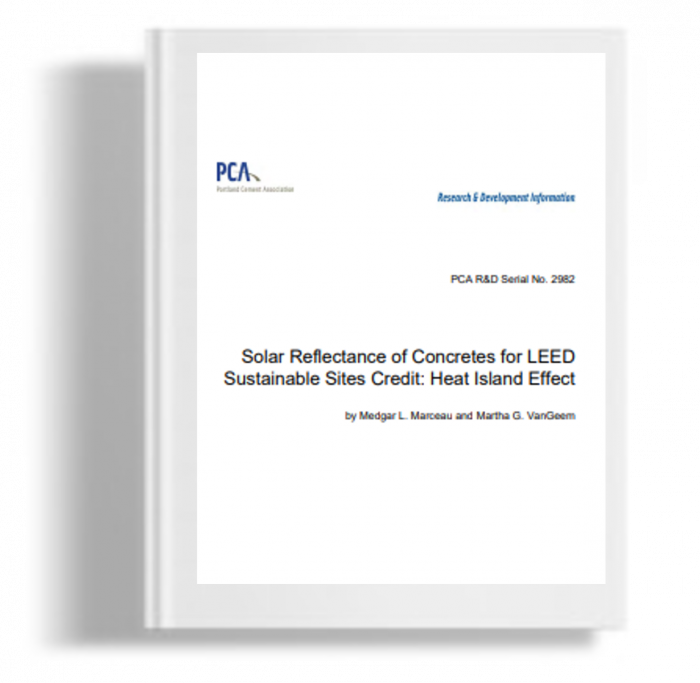Kami menggunakan cookies untuk membuat pengalaman Anda lebih baik. Untuk mematuhi petunjuk e-Pribadi yang baru, kami perlu meminta persetujuan Anda untuk menyetel cookies. Pelajari lebih lanjut .
Solar reflectance of concretes for LEED sustainable sites credits : Heat island effects
This report presents the results of solar reflectance testing on 135 concrete specimens from 45 concrete mixes, representing a broad range of concretes. This testing determined which combinations of concrete constituents meet the solar reflectance index requirements in the Leadership in Energy and Environmental Design for New Construction (LEED-NC) Sustainable Sites credit for reducing the heat island effect. All concretes in this study had average solar reflectances of at least 0.30 (corresponding to an SRI of at least 29), and therefore meet the requirements of LEED-NC SS 7.1. These concretes also meet the requirements for steep-sloped roofs in LEED-NC SS 7.2. The lowest solar reflectances were from concretes composed of dark gray fly ash. The solar reflectance of the cement had more effect on the solar reflectance of the concrete than any other constituent material. The solar reflectance of the supplementary cementitious material had the second greatest effect.
This report presents the results of solar reflectance testing on 135 concrete specimens from 45 concrete mixes, representing a broad range of concretes. This testing determined which combinations of concrete constituents meet the solar reflectance index requirements in the Leadership in Energy and Environmental Design for New Construction (LEED-NC) Sustainable Sites credit for reducing the heat island effect. All concretes in this study had average solar reflectances of at least 0.30 (corresponding to an SRI of at least 29), and therefore meet the requirements of LEED-NC SS 7.1. These concretes also meet the requirements for steep-sloped roofs in LEED-NC SS 7.2. The lowest solar reflectances were from concretes composed of dark gray fly ash. The solar reflectance of the cement had more effect on the solar reflectance of the concrete than any other constituent material. The solar reflectance of the supplementary cementitious material had the second greatest effect.

